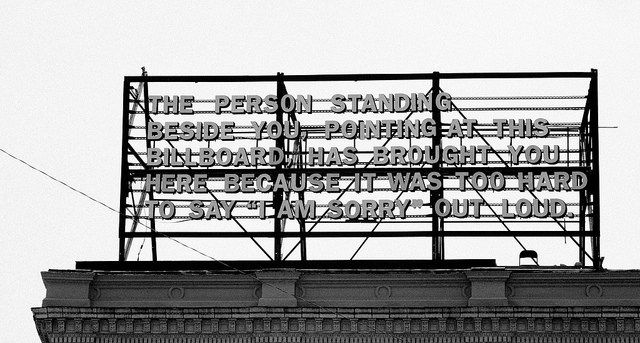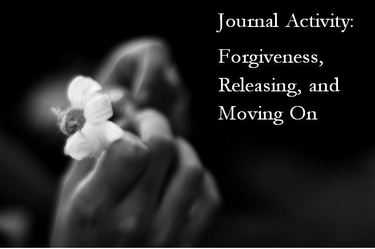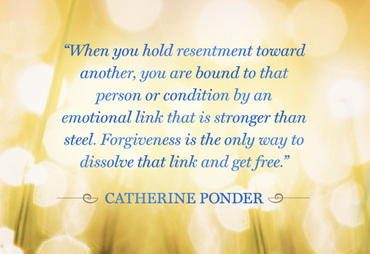|
It may not have been your intention, but you’ve hurt someone….now what? Before you even begin to apologize you need to take the time to empathize and try to understand how what you’ve done may have made the other person feel, how it has inconvenienced them, and/or acknowledge the damage or hurt you’ve caused. Unless you can bring yourself to understand this, your apology will seem empty. Think of how you would have felt if someone in your position had done this to you? What do you predict is the other person’s side of the story? Try to see the situation from their eyes. Now it’s time to forgive yourself, not excuse yourself, forgive yourself. Sometimes we are so disappointed in ourselves that we can’t even begin to face the person we’ve hurt. Look, you’re human and not perfect. We all make mistakes, and more importantly, WE ALL MAKE BIG MISTAKES! It’s ok to feel guilt about what we’ve done, but not ok to feel shame about it. Forgive yourself. Remember: Guilt=I did something bad Shame=I am bad. The best thing you can do at this point, even if you can’t fix what you’ve done, is own up to it. It may save your relationship. At the very least, it will set you free. Now for the Apology. How you do it, email, phone call, face-to-face (notice I did not list text), is up to you. By the way, there is no good time or place, just go for it and get the conversation started. How to Apologize Step 1. Full acknowledgment of the offense. Describe exactly what you did wrong, including the good bad and the ugly. Once the facts are out, acknowledge that your behavior violated the moral code of your relationship with that person. Acknowledge how it may have damaged your relationship with that person. Step 2. An explanation. Your best bet at restoring your relationship is giving a truthful and thorough explanation of why you’ve done what you’ve done. This is also your opportunity to explain your point of view. Remember, you’re apologizing, this is not the time to play the blame game or make excuses, it’s time for you to take ownership of your actions why explaining yourself. Step 3. Genuine expression of remorse. Few things are less likely to evoke forgiveness than apology without remorse. How about “I’m sorry I’ve hurt you” instead. Take some ownership, no passive aggressive “I’m sorry you feel that way”. Step 4. Reparations for damage. An apology includes real repair work: not just saying "I'm sorry." Often there will be nothing tangible to repair; hearts and relationships are broken more often than physical objects. In such cases, your efforts should focus on restoring the other person's dignity. The question "What else do you want me to do?" can start this process. If you ask it sincerely, really listen to the answer and act on the other party's suggestions, you'll be honoring their feelings, perspective and experience. The knowledge that one is heard and valued has incredible healing power; it can mend even seemingly irreparable wounds. After you apologize, you should feel better about yourself. You should also feel the weight of guilt lifting. There is no guarantee that the other person will share your sentiments, but hopefully over time, you will be able to repair your relationship. "An apology is the end of our struggle with history, the act by which we untangle from our past by accepting what it actually was. From this truthful place we are free to move forward, whether or not we are forgiven. Apologizing doesn't make us perfect, but it shows our commitment to be honest about our imperfections and steadfast in our efforts to do better." If all else fails, find this sign: Leana Sykes is a Relationship Counselor and the owner of Leana Sykes Relationship Counseling & Mediation in Oaklyn, NJ.
0 Comments
Yes, we all know the importance of forgiveness and setting yourself free from the resentments that hold you back, but how the heck do you do it? The feeling of wanting to move on from the plaguing thoughts of how someone has hurt you can be frustrating and maddening. We also know that “hurt people, hurt people” and until you can process and release your pain, you may unwillingly sabotage other important relationships in your life.
Forgiveness doesn’t necessarily mean rationalizing or excusing the pain or abuse someone has put you through. It’s not about pretending that you don’t feel angry or hurt, it’s about responding to it a different way. It doesn’t mean forgetting it either. It just means setting yourself free from your wounds controlling your life. Forgiveness is for you, not them. Often times, forgiving another person requires forgiving yourself first. We often judge ourselves for letting ourselves get into certain situations, or letting certain people in our lives. Although in our rational minds, we know we don’t deserve what has happened to us, we can’t quite forgive ourselves for dancing with the devil. Many of us have experienced such emotions and I can testify that this exercise by Deepak Chopra has let me forgive others, and myself: 7 Steps to Forgiving Yourself (or Anyone Else) By Deepak Chopra 1. Responsibility -Tell yourself you will no longer assign blame for the action. 2. Feeling- Recall what the incident felt like at the time. Feel it in your body. 3. Labeling- Put an emotion to that feeling. Was it anger? Fear? Sadness? 4. Expressing- Write down what happened in the incident in the first person, then write it down as the other person. Finally, write it down as an objective 3rd person. 5. Sharing- Look at the person next to you and share your story, or share it with someone you trust. 6. Releasing- Tear (or burn) up that paper. 7. Celebrating- Stand up and celebrate the release. Maybe do a little dance. Leana Sykes is a Relationship Counselor and the owner of Leana Sykes Relationship Counseling & Mediation in Oaklyn, NJ. |




 RSS Feed
RSS Feed
